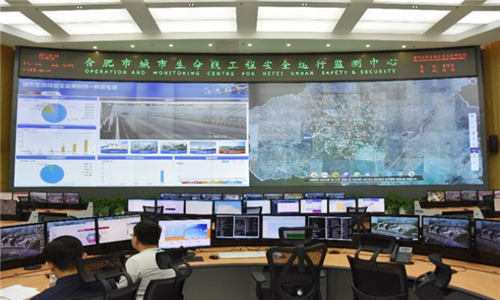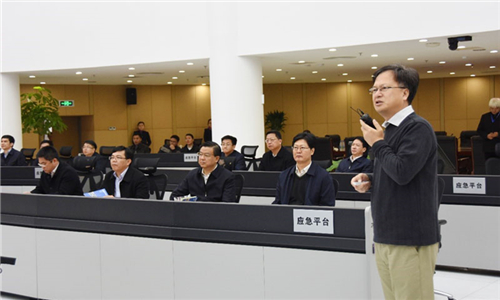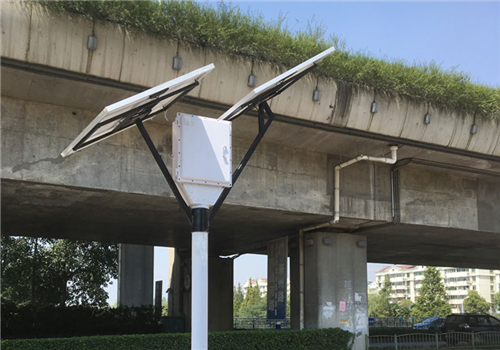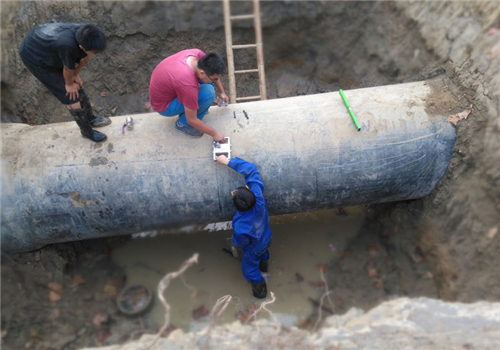GSAFETY protects city infrastructure safety with powerful monitoring network
2017-08-15
Tsinghua Holdings' subsidiary Beijing GS Technology Co Ltd (GSAFETY) has won a 2016 Tsinghua Industry Top 10 Innovation Project award for its pioneering work in preventing potential public safety emergencies in Hefei, capital of East China's Anhui province.
GSAFETY has developed from an offshoot of Tsinghua University's Institute of Public Safety Research into China's only listed emergency response company, and its solutions are used in cities in countries including China, Ecuador, Trinidad and Tobago, and Venezuela.
The company has been recognized for its success trialing its groundbreaking Urban Lifeline Engineering Safety Operation Monitoring System, which uses a web of sensors and advanced technologies, such as internet of things, cloud computing, big data, mobile internet, and BIM/GIS, to allow cities to prevent disasters and defuse risks in the shortest possible time.
Installed in Hefei in September 2016, the system has already helped the city avert several potentially fatal gas leakage disasters.

Officials analyze data in the Operation and Monitoring Center for Hefei Urban Safety and Security in Hefei, Anhui province.
The sensors of the first phase project covering 2.5 square kilometers of Hefei's gas pipe network, have detected many issues to date, including four highest-level alerts, indicating gas leakages severe enough to produce an explosion.
The Hefei government has already commissioned GSAFETY to expand the system dramatically to cover thousands of kilometers of underground pipelines, including the city's gas, water, heating, drainage and water recycling networks.
"Through just one system, all the city's vital signs can be monitored at any time and all potential hazards can be detected at an early stage. There's no system like this in the world," said Yuan Hongyong, president of GSAFETY.

Government officials watch the monitors in the Operation and Monitoring Center.
As the first city in China to build an integrated control platform to manage the city's entire infrastructure, from gas and water to the power network, Hefei also took the lead to introduce GSAFETY's operation monitoring system to ensure the safety and smooth of the urban lifeline engineering.
The need for an emergency response system of the kind was clear to see. Devastating natural disasters have struck cities across China in recent years, with one flood in July 2016 displacing 713,000 people in Anhui province.
Though a safety system cannot of course prevent a disaster, it can stop the knock-on effects often triggered by extreme weather events—power cuts, interrupted water supplies, communications blackouts—that can sometimes be as disruptive as the initial event.
"It's not possible for a city to work out so many plans against every emergency. The key is to prevent source diffusion," said Yuan.

Part of the monitoring system for the gas pipe network in Hefei.
The first phase of the monitoring project was put into trial use in September, 2016, covering five bridges, 24.8 kilometers of water supply pipes and a 2.5 km-diameter underground close to Hefei's main gas pipes.
The system is comprised of a central platform, three front-end special systems, and high-sensitive sensors that are developed by GSAFETY.
Nearly 800 sets of sensors cover five bridges, capable of alerting the authorities if they detect extreme loads or structural changes in the bridges caused by the climate or external forces.
A further 107 sets of sensors monitor the water supply in real time, which have already had a major effect by helping workers quickly and accurately identify the source and positions of leaks.
The system has also proved itself extremely effective at detecting toxic gas leaks, identifying not only the precise location of the leak, but also the chemical composition and properties of the gas.
"Nearly all the gas leakages and incidents of excessive biogas thickness within the 2.5 km-diameter expanse can be covered. Previously, these were not on the must-do list of Hefei's water and power authorities," said Xu Lingshun, head of urban management networks at GSAFETY.
After its impressive start in Hefei, GSAFETY began constructing its much more ambitious second phase of the monitoring system in July.
This massive project covers a further 46 bridges, 819.5 km of gas pipes, 714.1 km water supply pipes, 254 km water drainage pipes, 201.5 km heat supply pipes and 14 km pipes for water recycling.
It also operates in more challenging areas of the city, with worn-out infrastructure, high-risk and densely populated areas, and more sensitive pipes and bridges.
In the water drainage monitoring system, the pipes will be gauged for liquid flow and level, sludge thickness, water quality and volume of combustible gas.
This will allow officials to prevent potential issues caused by leaks, misconnections, blockages or water logging.
A cluster of smart gauges to detect temperature and pressure will be utilized to monitor the heat supply network in real time, while the water recycling network will be monitored by a "smart ball", a spherical sensor that will roll around the pipes to detect any abnormal sound waves.
In line with Hefei's transition toward integrating the management of its entire infrastructure network, GSAFETY plans to turn the entire lifeline engineering system into a big database for the city, said a spokesperson for the Hefei urban and rural construction commission.

Workers install a sensor on a water supply pipe in Hefei.
He also disclosed that the second phase of the project, containing a staggering 25,000 pieces of equipment, would be completed in December 2019.
Wang Ping, vice-president of GSAFETY, attributed the company's success on the project to the technological assistance provided by Tsinghua University and the supportive policies implemented by the Hefei government, which gave the company priority access to data on the city's urban infrastructure.
GSAFETY regards the second phase of its monitoring system as a launch pad, stimulating an improvement in public security across China.

 Facebook
Facebook WeiXin
WeiXin CONTACT US
CONTACT US










 Tsinghua Holdings works hard for better ecological environment
Tsinghua Holdings works hard for better ecological environment